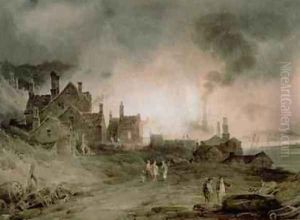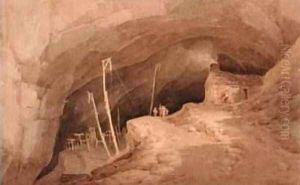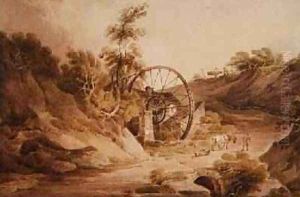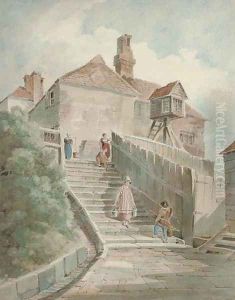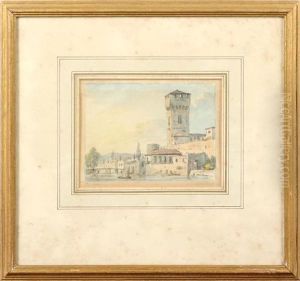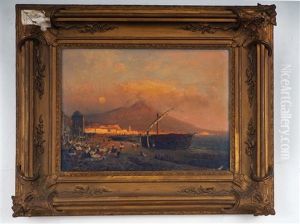Paul Sandby Munn Paintings
Paul Sandby Munn was an English landscape painter, watercolorist, and engraver, born in 1773. He was named after the renowned British watercolorist Paul Sandby, who was a friend of his father. This connection to such a significant figure in the art world of the time undoubtedly influenced Munn's career choice and his dedication to the medium of watercolor. Though not as widely recognized as his namesake, Munn developed a distinctive style that contributed to the British landscape tradition during the late 18th and early 19th centuries.
Munn's artistic journey began under the tutelage of his father, who was an amateur artist himself. This early exposure to art, combined with the influence of Paul Sandby and the thriving artistic community in Britain at the time, nurtured his talents. Munn's works are characterized by their meticulous attention to detail, a soft palette, and an ability to capture the atmospheric qualities of the British countryside. He was particularly adept at depicting the play of light on natural forms, a skill that made his landscapes both vibrant and evocative.
Throughout his career, Munn exhibited at prestigious institutions such as the Royal Academy and the British Institution. His works were well-received by contemporaries, and he garnered a modest following. However, despite his skills and the quality of his work, Munn did not achieve the same level of fame as some of his contemporaries. This was partly due to the competitive nature of the art scene at the time and the overshadowing presence of more dominant figures in the British landscape genre.
Munn's legacy, while not as prominent as that of some of his peers, is marked by his contributions to the development of watercolor as a respected medium in British art. His dedication to landscape painting and his pursuit of beauty in the natural world have earned him a place in the history of British art. Paul Sandby Munn passed away in 1845, leaving behind a body of work that continues to be appreciated by art historians and collectors for its sensitivity and quiet beauty.
